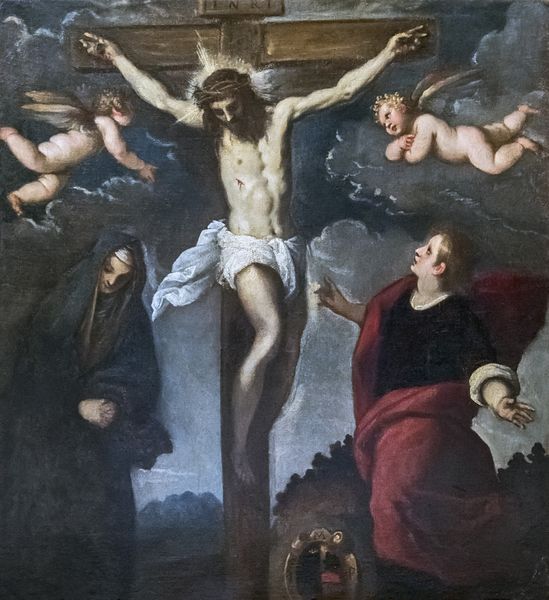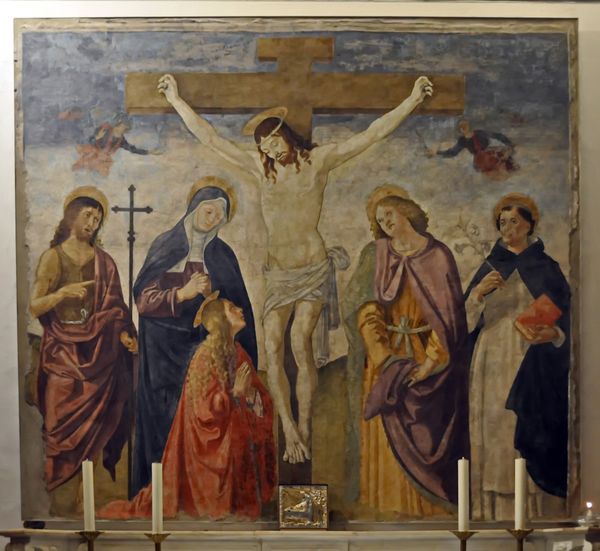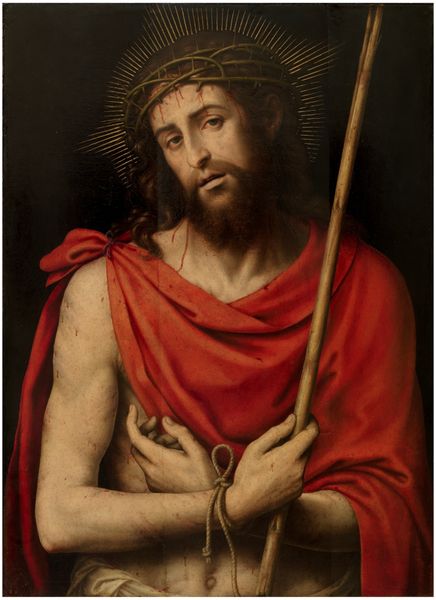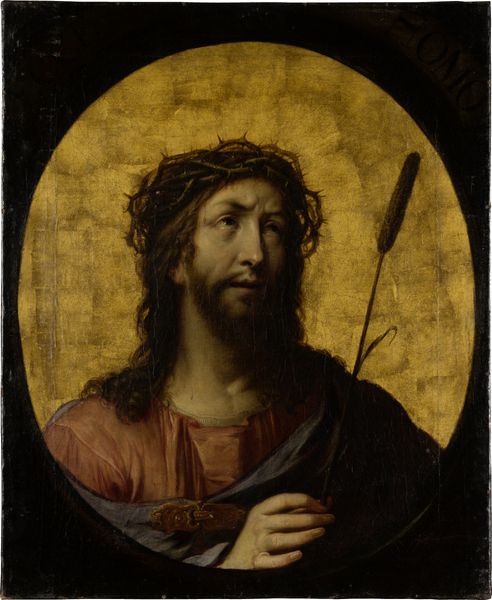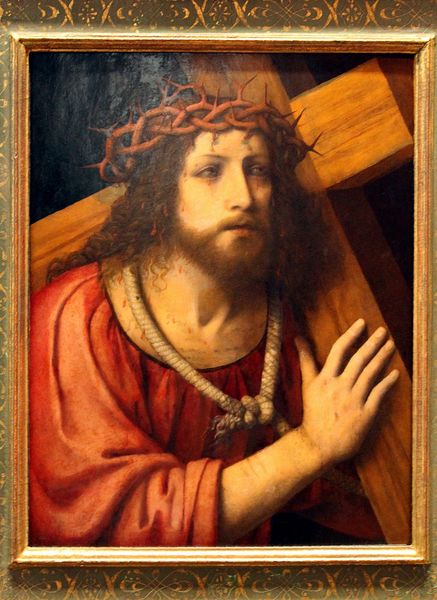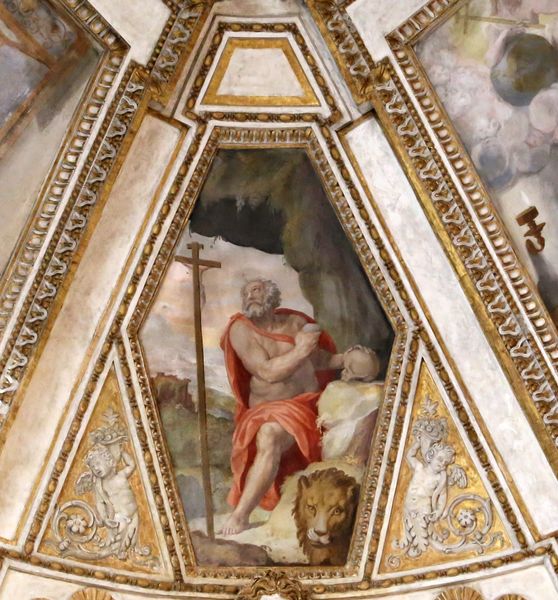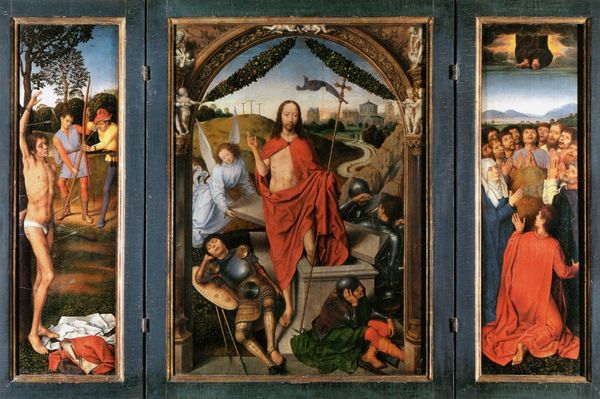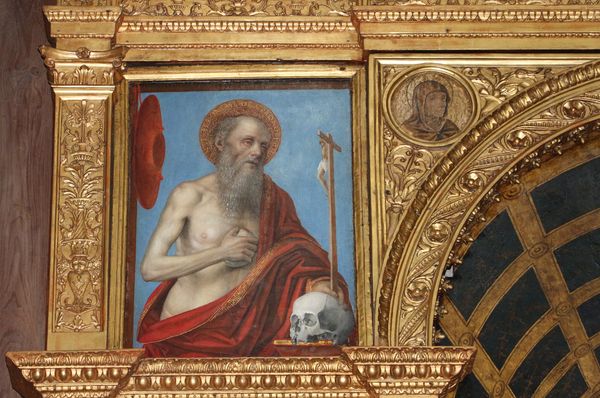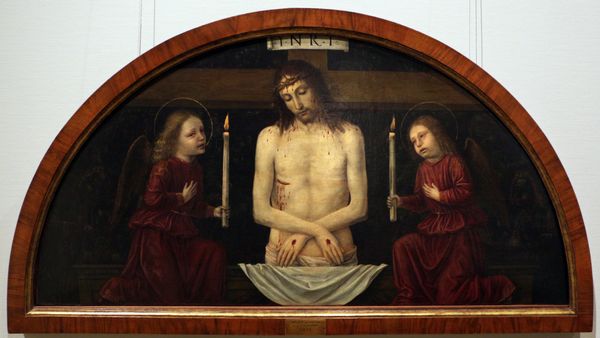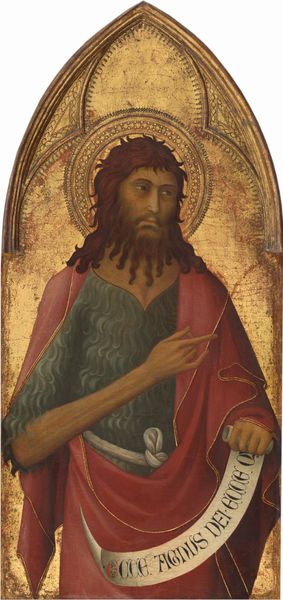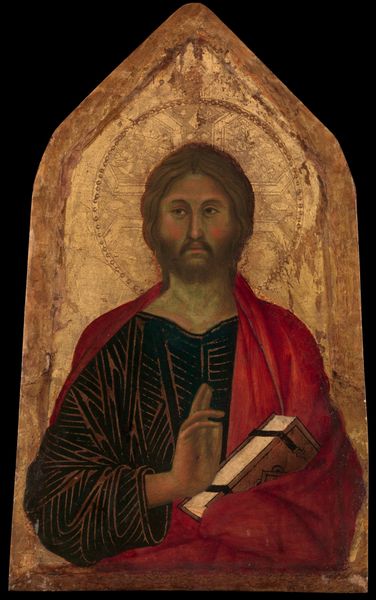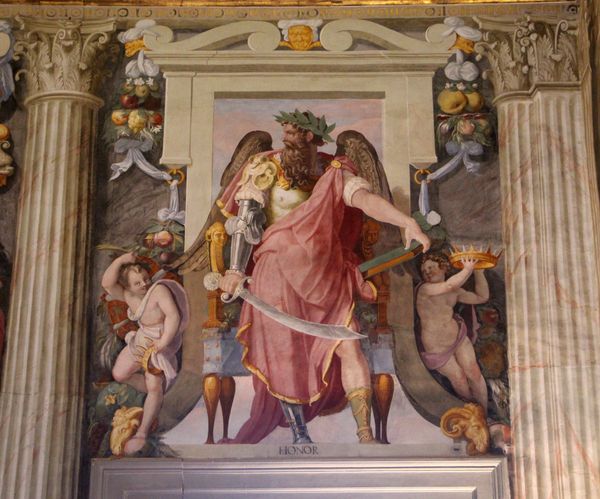
oil-paint
#
portrait
#
oil-paint
#
figuration
#
11_renaissance
#
oil painting
#
history-painting
#
academic-art
#
italian-renaissance
#
portrait art
Copyright: Public domain
Ambrogio Bergognone captured this detail of the Polyptych in Santo Spirito around the turn of the 16th century. Here, John the Baptist is depicted with his symbolic attributes: the simple staff topped with a cross, representing his role as a herald of Christ, and the scroll bearing witness to the Lamb of God. Consider this image next to ancient depictions of Hermes, the messenger god, also often shown with a staff. Over time, the staff evolves, echoing through the ages but taking on new spiritual significance with the advent of Christianity. Even the act of pointing, seen in John's gesture, recurs across epochs, from classical orators to Renaissance philosophers, each using the gesture to signify knowledge and authority. The psychological weight of these symbols is profound. They tap into humanity’s collective memory, stirring feelings of recognition, authority, and spiritual connection. Just as the human psyche strives for coherence, cultural symbols like these strive for continuity, resurfacing in altered forms, endlessly weaving through the fabric of time.
Comments
No comments
Be the first to comment and join the conversation on the ultimate creative platform.
